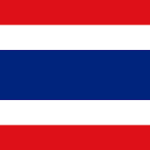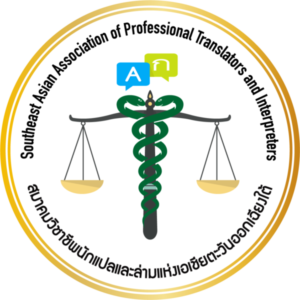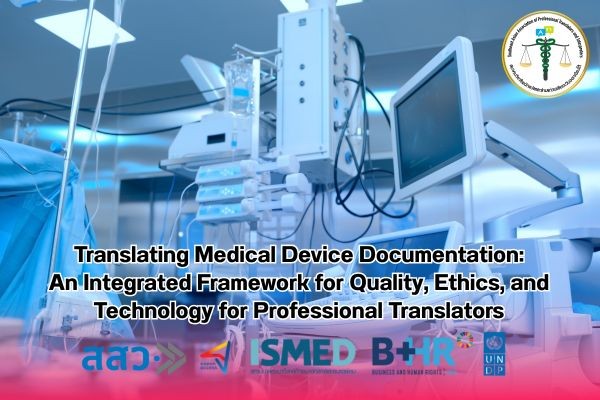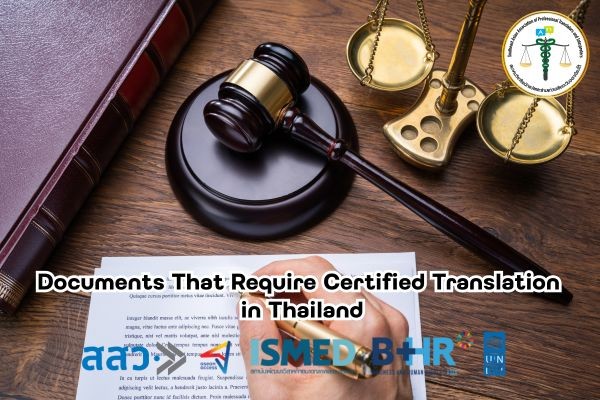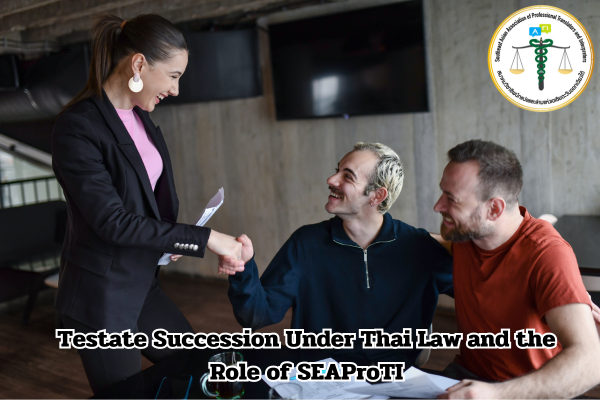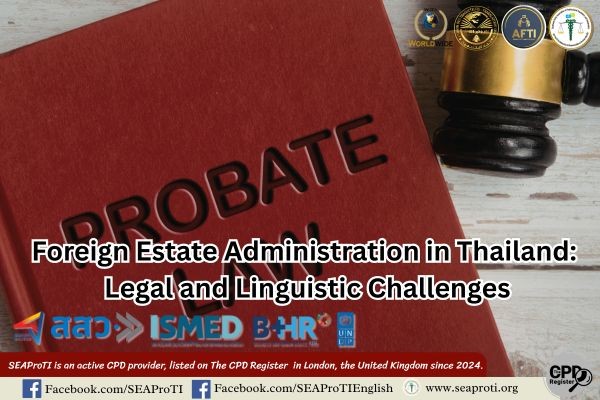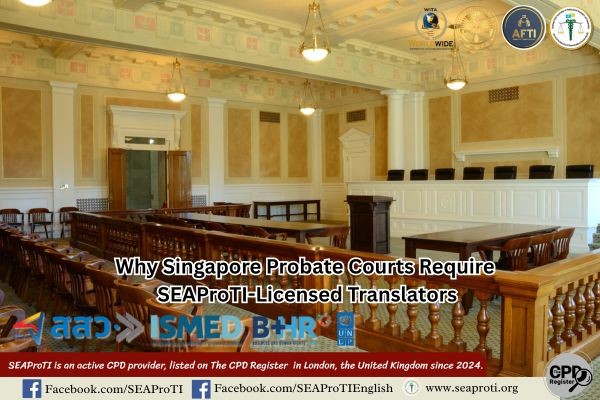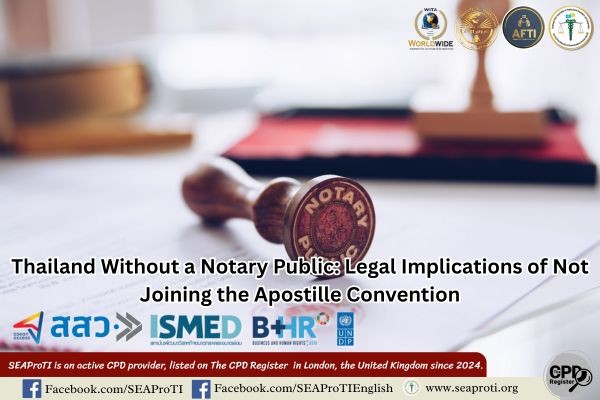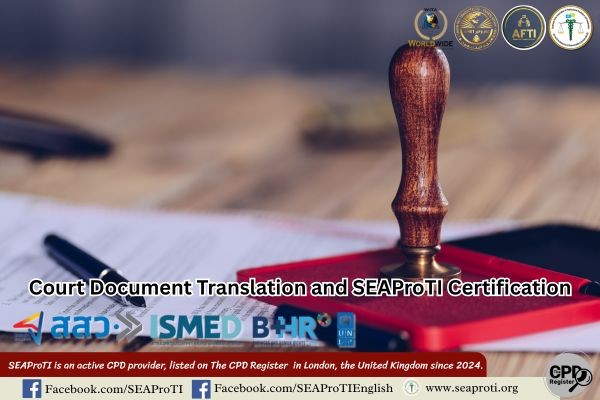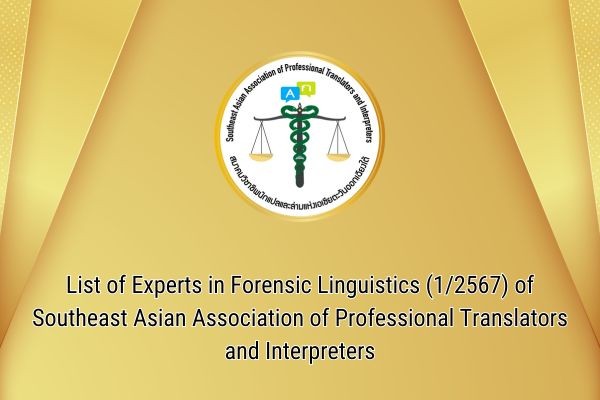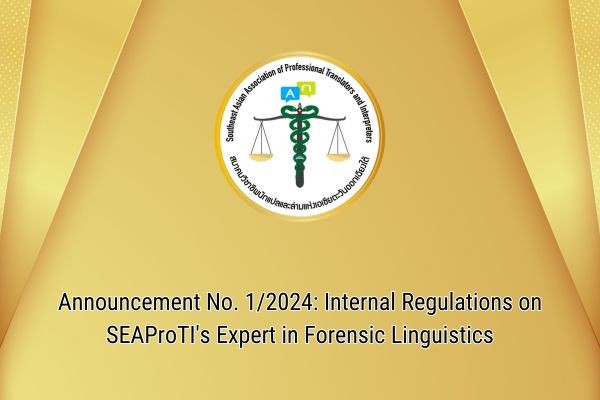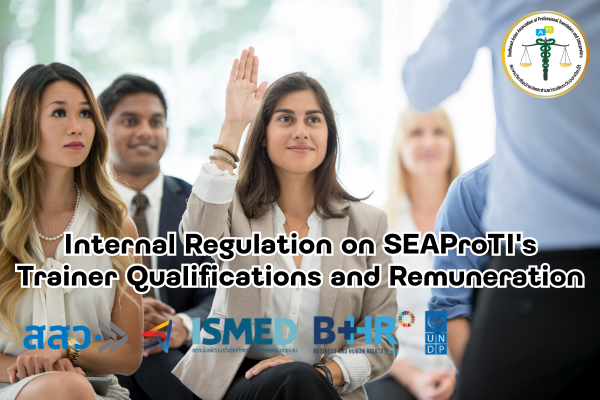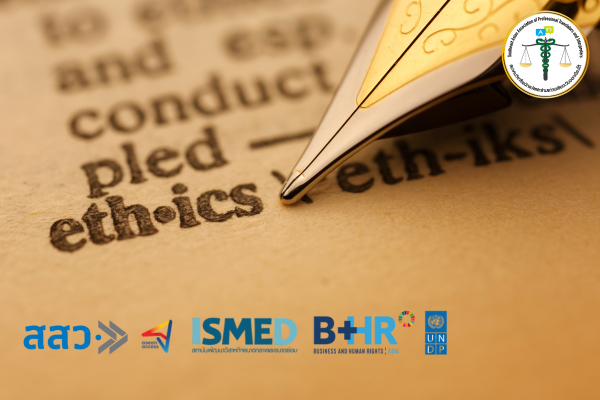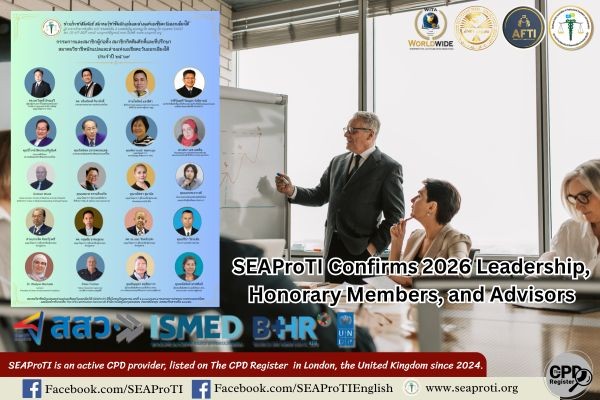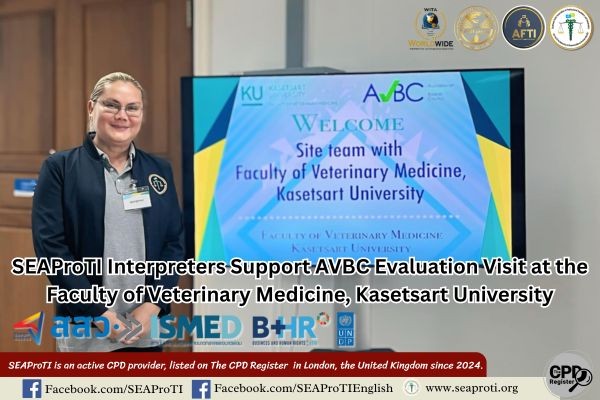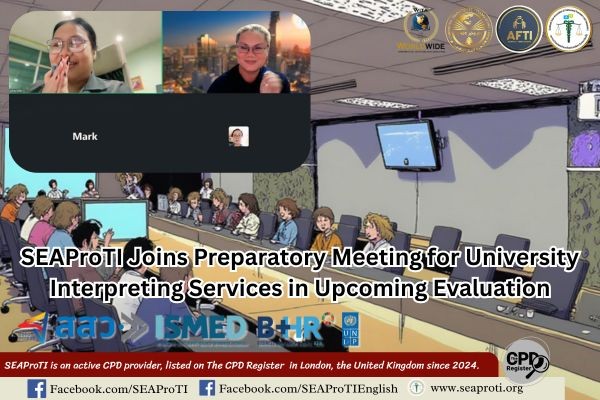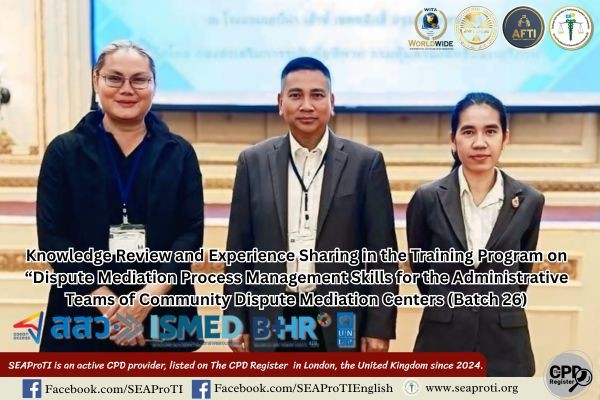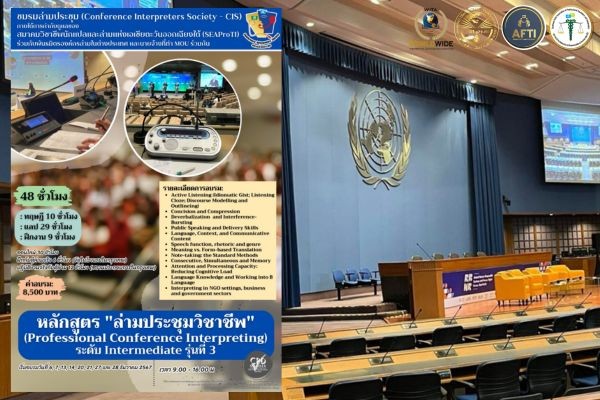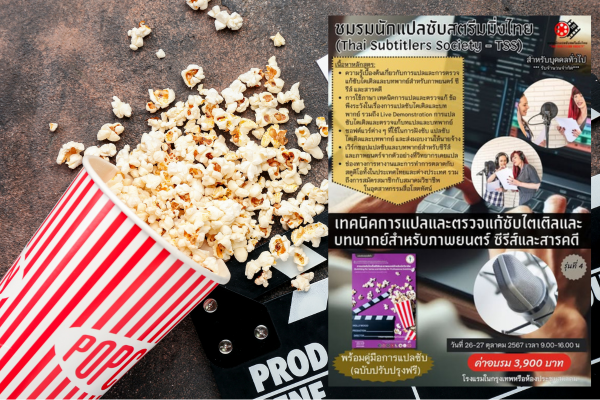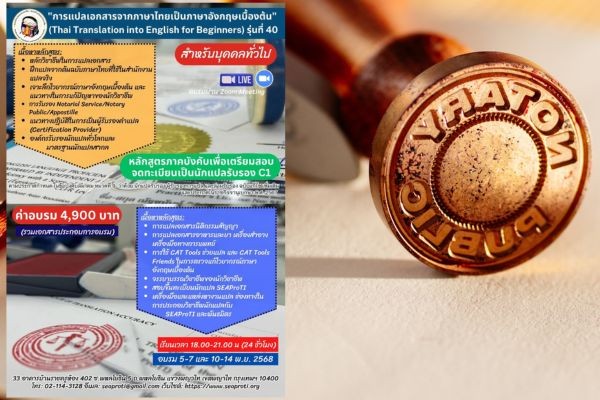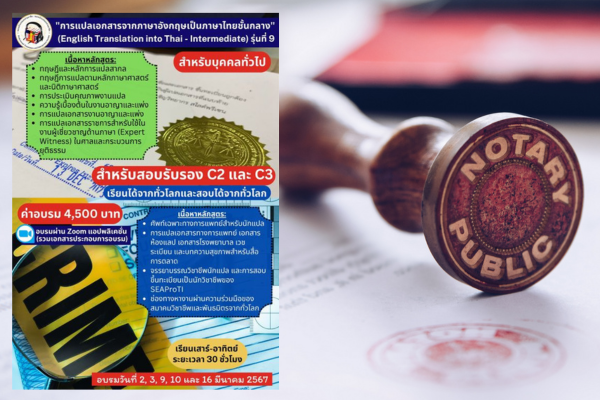Translating Medical Device Documentation:
An Integrated Framework for Quality, Ethics, and Technology for Professional Translators
Author: Wanitcha Sumanat
Affiliation: Southeast Asian Professional Translators and Interpreters Association (SEAProTI)
The rapid growth of the global medical device industry has led to a significant increase in the demand for related document translation. This documentation is critical for patient safety and the effective use of medical devices. Translation errors can lead to severe consequences. This research paper aims to present an Integrated Framework for professional translators of medical device documentation, synthesizing knowledge from international standards, translation theory, and industry best practices. The framework consists of three main pillars: (1) a Quality Practice Framework, emphasizing accuracy, terminology management, and quality assurance processes compliant with ISO 17100; (2) Ethical Imperatives, covering confidentiality, competence, and accountability; and (3) Advanced Techniques and Emerging Trends, which consider localization, back-translation, and the judicious application of Machine Translation Post-Editing (MTPE). The synthesis indicates that translators require a diverse skill set beyond linguistic ability to meet the challenges of this field. This framework will be beneficial for translators, language service providers (LSPs), and training institutions in elevating professional standards and ensuring the safety of medical products internationally.
Keywords: Medical Translation, Medical Devices, Translation Quality Assurance, Translator Ethics, ISO 13485, Skopos Theory
1. Introduction
The expansion of the global medical device market, coupled with stricter regulations in many regions, such as the European Union’s Medical Device Regulation (EU MDR 2017/745), has created a significant impetus for high-quality language translation services (GALA, 2021). Documentation accompanying medical devices, such as Instructions for Use (IFU), labels, and user interface (UI) software, is considered an integral part of the product itself. The translation of these documents is therefore not merely a linguistic conversion but a critical component that directly impacts correct usage and patient safety (Montalt & Gonzalez Davis, 2007).
Translation errors, however minor, can lead to incorrect diagnoses, improper device use, patient injury, or even death. They can also result in product recalls, causing immense financial and reputational damage to manufacturers (Wagner, 2018). For this reason, this research paper aims to propose an “Integrated Framework,” synthesized from industry standards and relevant theories, to serve as a guide for professional translators in delivering the highest quality medical device translations that align with ethical principles.
2. Literature Review and Theoretical Framework
The proposed framework is grounded in three key areas of standards and theory.
2.1 International Quality Standards: The ISO 13485:2016 standard mandates that translated documents must be verified for accuracy, a requirement for medical device manufacturers. Meanwhile, ISO 17100:2015 is a standard for translation service providers, specifying clear work processes, translator qualifications, and, crucially, a two-step quality assurance process involving revision by a second translator (International Organization for Standardization, 2015).
2.2 Skopos Theory: This theory, proposed by Vermeer (1989/2012), posits that the “purpose” or “objective” (Skopos) of a translation determines the entire translation strategy. In the context of medical devices, this theory is highly relevant because the purpose of a manual intended for a surgeon differs significantly from that of a manual for a patient. The choice of terminology and linguistic register must therefore be adapted to the end-user to achieve the ultimate objective of safety and efficacy.
2.3 Professional Ethics: Professional translator associations worldwide, such as the American Translators Association (ATA), have established codes of ethics that emphasize confidentiality, working within one’s scope of competence, and accountability for one’s work (ATA, 2020). These principles are of paramount importance in the medical field, which involves sensitive data and life-critical impact.
3. The Integrated Framework
Based on the foundations above, an integrated framework for translators of medical device documentation can be synthesized into three dimensions.
3.1 Quality Practice Framework
This is a work process focused on achieving accurate and consistent results.
In-depth Pre-translation Analysis: Understanding the product, the purpose of the document (Skopos), and the end-user audience.
Systematic Terminology Management: Creating and utilizing a termbase and translation memory via CAT (Computer-Assisted Translation) tools to guarantee the consistency of critical terminology (Pym, 2014).
Standard-Compliant QA Process: Strictly adhering to the process of Translation, Editing/Revision, and Proofreading (TEP), which aligns with the ISO 17100 standard.
3.2 Ethical Imperatives
These are the professional obligations to which a translator must adhere.
Confidentiality: Signing and strictly complying with non-disclosure agreements (NDAs).
Professional Competence: Assessing the complexity of the content and declining assignments that exceed one’s capabilities, or seeking collaboration with a Subject Matter Expert (SME).
Accountability: Acknowledging and promptly correcting errors, and considering professional indemnity insurance to manage risks.
3.3 Advanced Techniques and Emerging Trends
This involves applying advanced techniques and technologies to enhance efficiency and quality.
Localization: Adapting units of measurement, date formats, and UI text to suit the context of users in the target country (Dunne & Dunne, 2011).
Back-Translation for Verification: Understanding and being able to participate in the back-translation process, which is often used for critical documents like clinical trial questionnaires, to verify semantic equivalence (Brislin, 1970).
Machine Translation Post-Editing (MTPE): Recognizing the potential and risks of MT in the medical field. The professional translator must possess advanced post-editing skills to revise MT output to 100% accuracy, without relying on the technology wholesale (Guerberof, 2014).
4. Conclusion and Recommendations
The translation of medical device documentation is a complex and demanding specialization that requires more than just linguistic proficiency. This research has presented an integrated framework that combines quality standards, ethical principles, and technology to provide a clear pathway for translators to produce reliable and safe work. This framework underscores that translators must develop themselves as experts who understand the technical context, regulatory landscape, and end-user needs.
For practical recommendations, professional associations like SEAProTI should promote continuous training on these topics, and language service providers should adopt this framework in their translator selection and quality control processes. For future research, empirical studies should be conducted to evaluate the impact of applying this framework on translation quality and client satisfaction in the medical device industry.
References
- American Translators Association. (2020). Code of ethics and professional practice. https://www.atanet.org/ata-governance/code-of-ethics-and-professional-practice/
- Brislin, R. W. (1970). Back-translation for cross-cultural research. Journal of Cross-Cultural Psychology, 1(3), 185–216. https://doi.org/10.1177/135910457000100301
- Dunne, K. J., & Dunne, E. S. (Eds.). (2011). Translation and localization project management: The art of the possible. John Benjamins Publishing.
- GALA. (2021). The state of the localization industry. Globalization and Localization Association.
- Guerberof, A. (2014). The role of professional experience in post-editing. In S. O’Brien, L. Balling, M. Carl, M. Simard, & L. Specia (Eds.), Post-editing of machine translation: Processes and applications (pp. 148-167). Cambridge Scholars Publishing.
- International Organization for Standardization. (2015). ISO 17100:2015 Translation services — Requirements for translation services. ISO.
- International Organization for Standardization. (2016). ISO 13485:2016 Medical devices — Quality management systems — Requirements for regulatory purposes. ISO.
- Montalt, V., & Gonzalez Davis, M. (2007). Medical translation step by step: Learning by drafting. St. Jerome Publishing.
- Pym, A. (2014). Exploring translation theories (2nd ed.). Routledge.
- Vermeer, H. J. (2012). Skopos and commission in translational action. In L. Venuti (Ed.), The translation studies reader (3rd ed., pp. 191-202). Routledge. (Original work published 1989)
- Wagner, E. (2018). Medical and pharmaceutical translation. Routledge.
SEAProTI’s certified translators, translation certification providers, and certified interpreters:
The Southeast Asian Association of Professional Translators and Interpreters (SEAProTI) has officially announced the criteria and qualifications for individuals to register as “Certified Translators,” “Translation Certification Providers,” and “Certified Interpreters” under the association’s regulations. These guidelines are detailed in Sections 9 and 10 of the Royal Thai Government Gazette, issued by the Secretariat of the Cabinet under the Office of the Prime Minister of the Kingdom of Thailand, dated July 25, 2024, Volume 141, Part 66 Ng, Page 100. the Royal Thai Government Gazette
การแปลเอกสารเครื่องมือแพทย์: กรอบแนวปฏิบัติเชิงบูรณาการด้านคุณภาพ จรรยาบรรณ และเทคโนโลยสำหรับนักแปลมืออาชีพ
ชื่อผู้เขียน: วณิชชา สุมานัส
สังกัด: สมาคมนักแปลและล่ามแห่งเอเชียตะวันออกเฉียงใต้ (SEAProTI)
บทคัดย่อ
อุตสาหกรรมเครื่องมือแพทย์ทั่วโลกมีการเติบโตอย่างรวดเร็ว ส่งผลให้ความต้องการในการแปลเอกสารที่เกี่ยวข้องเพิ่มสูงขึ้นอย่างมีนัยสำคัญ เอกสารเหล่านี้มีความสำคัญอย่างยิ่งต่อความปลอดภัยของผู้ป่วยและประสิทธิภาพในการใช้งานเครื่องมือ การแปลที่ผิดพลาดอาจนำไปสู่ผลลัพธ์ที่ร้ายแรงได้ งานวิจัยฉบับนี้มีวัตถุประสงค์เพื่อนำเสนอกรอบแนวปฏิบัติเชิงบูรณาการ (Integrated Framework) สำหรับนักแปลเอกสารเครื่องมือแพทย์มืออาชีพ โดยสังเคราะห์องค์ความรู้จากมาตรฐานสากล, ทฤษฎีการแปล, และแนวปฏิบัติที่ดีที่สุดในอุตสาหกรรม กรอบแนวคิดดังกล่าวประกอบด้วย 3 เสาหลัก ได้แก่ (1) กรอบปฏิบัติด้านคุณภาพ (Quality Practice Framework) ที่เน้นความแม่นยำ การจัดการคลังศัพท์ และกระบวนการประกันคุณภาพตามมาตรฐาน ISO 17100 (2) พันธกิจด้านจรรยาบรรณ (Ethical Imperatives) ที่ครอบคลุมการรักษาความลับ ความสามารถ และความรับผิดชอบ และ (3) เทคนิคและแนวโน้มอุบัติใหม่ (Advanced Techniques and Emerging Trends) ซึ่งพิจารณาถึงการทำ Localisation, การแปลกลับ (Back-Translation), และการประยุกต์ใช้การตรวจแก้ภาษาจากเครื่องแปล (Machine Translation Post-Editing: MTPE) อย่างมีวิจารณญาณ ผลการสังเคราะห์ชี้ให้เห็นว่า นักแปลจำเป็นต้องมีทักษะที่หลากหลายนอกเหนือจากความสามารถทางภาษา เพื่อรับมือกับความท้าทายในสาขานี้ กรอบแนวปฏิบัตินี้จะเป็นประโยชน์ต่อนักแปล, บริษัทผู้ให้บริการด้านภาษา (LSPs), และสถาบันฝึกอบรม เพื่อยกระดับมาตรฐานวิชาชีพและสร้างความมั่นใจในความปลอดภัยของผลิตภัณฑ์ทางการแพทย์ในระดับสากล
คำสำคัญ: การแปลการแพทย์, เครื่องมือแพทย์, การประกันคุณภาพการแปล, จรรยาบรรณนักแปล, ISO 13485, ทฤษฎีสโคโปส
1. บทนำ (Introduction)
การขยายตัวของตลาดเครื่องมือแพทย์ (Medical Devices) ทั่วโลก ควบคู่ไปกับกฎระเบียบที่เข้มงวดขึ้นในหลายภูมิภาค เช่น กฎระเบียบว่าด้วยเครื่องมือแพทย์ของสหภาพยุโรป (EU MDR 2017/745) ได้สร้างแรงผลักดันสำคัญให้เกิดความต้องการบริการแปลภาษาคุณภาพสูง (GALA, 2021) เอกสารประกอบเครื่องมือแพทย์ เช่น คู่มือการใช้งาน (IFU), ฉลาก, และซอฟต์แวร์ส่วนต่อประสานกับผู้ใช้ (UI) ถือเป็นส่วนหนึ่งของตัวผลิตภัณฑ์ การแปลเอกสารเหล่านี้จึงมิใช่เป็นเพียงการแปลงภาษา แต่เป็นองค์ประกอบสำคัญที่ส่งผลโดยตรงต่อการใช้งานที่ถูกต้องและความปลอดภัยของผู้ป่วย (Montalt & Gonzalez Davis, 2007)
ความผิดพลาดในการแปล แม้เพียงเล็กน้อย อาจนำไปสู่การวินิจฉัยที่คลาดเคลื่อน, การใช้เครื่องมือที่ไม่ถูกต้อง, การบาดเจ็บของผู้ป่วย, หรือแม้กระทั่งการเสียชีวิต และอาจส่งผลให้ผู้ผลิตต้องเรียกคืนผลิตภัณฑ์ซึ่งสร้างความเสียหายอย่างมหาศาล (Wagner, 2018) ด้วยเหตุนี้ งานวิจัยฉบับนี้จึงมุ่งเสนอ “กรอบแนวปฏิบัติเชิงบูรณาการ” ที่สังเคราะห์จากมาตรฐานอุตสาหกรรมและทฤษฎีที่เกี่ยวข้อง เพื่อเป็นแนวทางสำหรับนักแปลมืออาชีพในการส่งมอบงานแปลเอกสารเครื่องมือแพทย์ที่มีคุณภาพสูงสุดและสอดคล้องกับหลักจรรยาบรรณ
2. การทบทวนวรรณกรรมและกรอบแนวคิด (Literature Review and Theoretical Framework)
กรอบแนวปฏิบัติที่นำเสนอนี้ตั้งอยู่บนพื้นฐานของมาตรฐานและทฤษฎีที่สำคัญ 3 ประการ
2.1 มาตรฐานคุณภาพระดับสากล: มาตรฐาน ISO 13485:2016 กำหนดให้เอกสารที่แปลแล้วต้องได้รับการทวนสอบความถูกต้อง ซึ่งเป็นข้อบังคับสำหรับผู้ผลิตเครื่องมือแพทย์ ในขณะที่ ISO 17100:2015 เป็นมาตรฐานสำหรับผู้ให้บริการแปลโดยตรง ซึ่งกำหนดกระบวนการทำงานที่ชัดเจน รวมถึงคุณสมบัติของนักแปล และที่สำคัญคือกระบวนการประกันคุณภาพแบบสองขั้นตอน คือ การตรวจแก้ (Revision) โดยนักแปลอีกคนหนึ่ง (International Organization for Standardization, 2015).
2.2 ทฤษฎีสโคโปส (Skopos Theory): ทฤษฎีนี้เสนอโดย Vermeer (1989/2012) โดยมีแนวคิดหลักว่า “เป้าหมาย” หรือ “วัตถุประสงค์” (Skopos) ของการแปลเป็นตัวกำหนดกลยุทธ์การแปลทั้งหมด ในบริบทของเครื่องมือแพทย์ ทฤษฎีนี้มีความสำคัญอย่างยิ่ง เพราะวัตถุประสงค์ของคู่มือสำหรับศัลยแพทย์ย่อมแตกต่างจากคู่มือสำหรับผู้ป่วย การเลือกใช้ศัพท์และระดับภาษาจึงต้องปรับเปลี่ยนตามกลุ่มเป้าหมายสุดท้าย เพื่อให้บรรลุวัตถุประสงค์ด้านความปลอดภัยและประสิทธิภาพสูงสุด
2.3 จรรยาบรรณวิชาชีพ: สมาคมวิชาชีพนักแปลทั่วโลก เช่น American Translators Association (ATA) ได้กำหนดหลักจรรยาบรรณที่เน้นย้ำถึงการรักษาความลับ, การทำงานในขอบเขตความเชี่ยวชาญ, และความรับผิดชอบต่อผลงาน (ATA, 2020) หลักการเหล่านี้มีความสำคัญอย่างยิ่งยวดในสาขาการแพทย์ซึ่งเกี่ยวข้องกับข้อมูลที่เป็นความลับและผลกระทบต่อชีวิต
3. กรอบแนวปฏิบัติเชิงบูรณาการ (The Integrated Framework)
จากพื้นฐานข้างต้น สามารถสังเคราะห์กรอบแนวปฏิบัติสำหรับนักแปลเอกสารเครื่องมือแพทย์ได้ 3 มิติ ดังนี้
3.1 กรอบปฏิบัติด้านคุณภาพ (Quality Practice Framework)
เป็นกระบวนการทำงานที่มุ่งเน้นผลลัพธ์ที่แม่นยำและสม่ำเสมอ
การวิเคราะห์เชิงลึกก่อนการแปล (Pre-translation Analysis): ทำความเข้าใจผลิตภัณฑ์, วัตถุประสงค์ของเอกสาร (Skopos), และกลุ่มเป้าหมายปลายทาง
การจัดการคลังศัพท์อย่างเป็นระบบ (Systematic Terminology Management): สร้างและใช้คลังศัพท์ (Termbase) และหน่วยความจำคำแปล (Translation Memory) ผ่านเครื่องมือช่วยแปล (CAT Tools) เพื่อรับประกันความสม่ำเสมอของคำศัพท์สำคัญ (Pym, 2014)
กระบวนการประกันคุณภาพตามมาตรฐาน (Standard-Compliant QA Process): ปฏิบัติตามกระบวนการแปล (Translation), ตรวจแก้ (Editing/Revision), และพิสูจน์อักษร (Proofreading) อย่างเคร่งครัด ซึ่งสอดคล้องกับมาตรฐาน ISO 17100
3.2 พันธกิจด้านจรรยาบรรณ (Ethical Imperatives)
เป็นข้อผูกมัดทางวิชาชีพที่นักแปลต้องยึดถือ
การรักษาความลับ (Confidentiality): ลงนามและปฏิบัติตามข้อตกลงไม่เปิดเผยข้อมูล (NDA) อย่างเคร่งครัด
ความซื่อสัตย์ต่อขอบเขตความสามารถ (Professional Competence): ประเมินความซับซ้อนของเนื้อหาและปฏิเสธงานที่เกินขีดความสามารถ หรือแสวงหาความร่วมมือจากผู้เชี่ยวชาญเฉพาะทาง (Subject Matter Expert – SME)
ความรับผิดชอบต่อผลงาน (Accountability): ยอมรับและแก้ไขข้อผิดพลาดโดยทันที และพิจารณาทำประกันภัยความรับผิดทางวิชาชีพเพื่อบริหารความเสี่ยง
3.3 เทคนิคและแนวโน้มอุบัติใหม่ (Advanced Techniques and Emerging Trends)
เป็นการประยุกต์ใช้เทคนิคและเทคโนโลยีเพื่อเพิ่มประสิทธิภาพและคุณภาพ
การปรับเนื้อหาเฉพาะพื้นที่ (Localization): แปลงหน่วยวัด, รูปแบบวันที่, และปรับแก้ข้อความ UI ให้เหมาะสมกับบริบทของผู้ใช้ในประเทศเป้าหมาย (Dunne & Dunne, 2011)
การใช้การแปลกลับเพื่อการทวนสอบ (Back-Translation for Verification): ทำความเข้าใจและสามารถมีส่วนร่วมในกระบวนการแปลกลับ ซึ่งมักใช้ในเอกสารสำคัญ เช่น แบบสอบถามในงานวิจัยทางคลินิก เพื่อยืนยันความเท่าเทียมกันของความหมาย (Brislin, 1970)
การตรวจแก้ภาษาจากเครื่องแปล (MTPE): ตระหนักถึงศักยภาพและความเสี่ยงของ MT ในสาการแพทย์ นักแปลมืออาชีพต้องมีทักษะการ Post-editing ขั้นสูง เพื่อแก้ไขผลลัพธ์จากเครื่องแปลให้ถูกต้อง 100% โดยไม่พึ่งพาเทคโนโลยีโดยสิ้นเชิง (Guerberof, 2014)
4. สรุปผลและข้อเสนอแนะ (Conclusion and Recommendations)
การแปลเอกสารเครื่องมือแพทย์เป็นสาขาวิชาชีพที่ซับซ้อนและต้องอาศัยมากกว่าความเชี่ยวชาญทางภาษา งานวิจัยนี้ได้นำเสนอกรอบแนวปฏิบัติเชิงบูรณาการที่ผสมผสานมาตรฐานคุณภาพ, หลักจรรยาบรรณ, และเทคโนโลยีเข้าด้วยกัน เพื่อเป็นแนวทางที่ชัดเจนสำหรับนักแปลในการสร้างสรรค์ผลงานที่น่าเชื่อถือและปลอดภัย กรอบแนวคิดนี้เน้นย้ำว่านักแปลต้องพัฒนาตนเองในฐานะผู้เชี่ยวชาญที่เข้าใจทั้งบริบททางเทคนิค, กฎระเบียบ, และความต้องการของผู้ใช้ปลายทาง
สำหรับข้อเสนอแนะเชิงปฏิบัติ สมาคมวิชาชีพอย่าง SEAProTI ควรสส่งเสริมการจัดอบรมในหัวข้อเหล่านี้อย่างต่อเนื่อง และบริษัทผู้ให้บริการด้านภาษาควรนำกรอบปฏิบัตินี้ไปปรับใช้ในกระบวนการคัดเลือกและควบคุมคุณภาพนักแปล สำหรับการวิจัยในอนาคต ควรมีการศึกษาเชิงประจักษ์เพื่อประเมินผลกระทบของการใช้กรอบปฏิบัตินี้ต่อคุณภาพของงานแปลและความพึงพอใจของลูกค้าในอุตสาหกรรมเครื่องมือแพทย์อย่างเป็นรูปธรรม
รายการอ้างอิง (References)
- American Translators Association. (2020). Code of ethics and professional practice. https://www.atanet.org/ata-governance/code-of-ethics-and-professional-practice/
- Brislin, R. W. (1970). Back-translation for cross-cultural research. Journal of Cross-Cultural Psychology, 1(3), 185–216. https://doi.org/10.1177/135910457000100301
- Dunne, K. J., & Dunne, E. S. (Eds.). (2011). Translation and localization project management: The art of the possible. John Benjamins Publishing.
- GALA. (2021). The state of the localization industry. Globalization and Localization Association.
- Guerberof, A. (2014). The role of professional experience in post-editing. In S. O’Brien, L. Balling, M. Carl, M. Simard, & L. Specia (Eds.), Post-editing of machine translation: Processes and applications (pp. 148-167). Cambridge Scholars Publishing.
- International Organization for Standardization. (2015). ISO 17100:2015 Translation services — Requirements for translation services. ISO.
- International Organization for Standardization. (2016). ISO 13485:2016 Medical devices — Quality management systems — Requirements for regulatory purposes. ISO.
- Montalt, V., & Gonzalez Davis, M. (2007). Medical translation step by step: Learning by drafting. St. Jerome Publishing.
- Pym, A. (2014). Exploring translation theories (2nd ed.). Routledge.
- Vermeer, H. J. (2012). Skopos and commission in translational action. In L. Venuti (Ed.), The translation studies reader (3rd ed., pp. 191-202). Routledge. (Original work published 1989)
- Wagner, E. (2018). Medical and pharmaceutical translation. Routledge.
เกี่ยวกับนักแปลรับรอง ผู้รับรองการแปล และล่ามรับรองของสมาคมวิชาชีพนักแปลและล่ามแห่งเอเชียตะวันออกเฉียงใต้
สมาคมวิชาชีพนักแปลและล่ามแห่งเอเชียตะวันออกเฉียงใต้ (SEAProTI) ได้ประกาศหลักเกณฑ์และคุณสมบัติผู้ที่ขึ้นทะเบียนเป็น “นักแปลรับรอง (Certified Translators) และผู้รับรองการแปล (Translation Certification Providers) และล่ามรับรอง (Certified Interpreters)” ของสมาคม หมวดที่ 9 และหมวดที่ 10 ในราชกิจจานุเบกษา ของสำนักเลขาธิการคณะรัฐมนตรี ในสำนักนายกรัฐมนตรี แห่งราชอาณาจักรไทย ลงวันที่ 25 ก.ค. 2567 เล่มที่ 141 ตอนที่ 66 ง หน้า 100 อ่านฉบับเต็มได้ที่: นักแปลรับรอง ผู้รับรองการแปล และล่ามรับรอง
